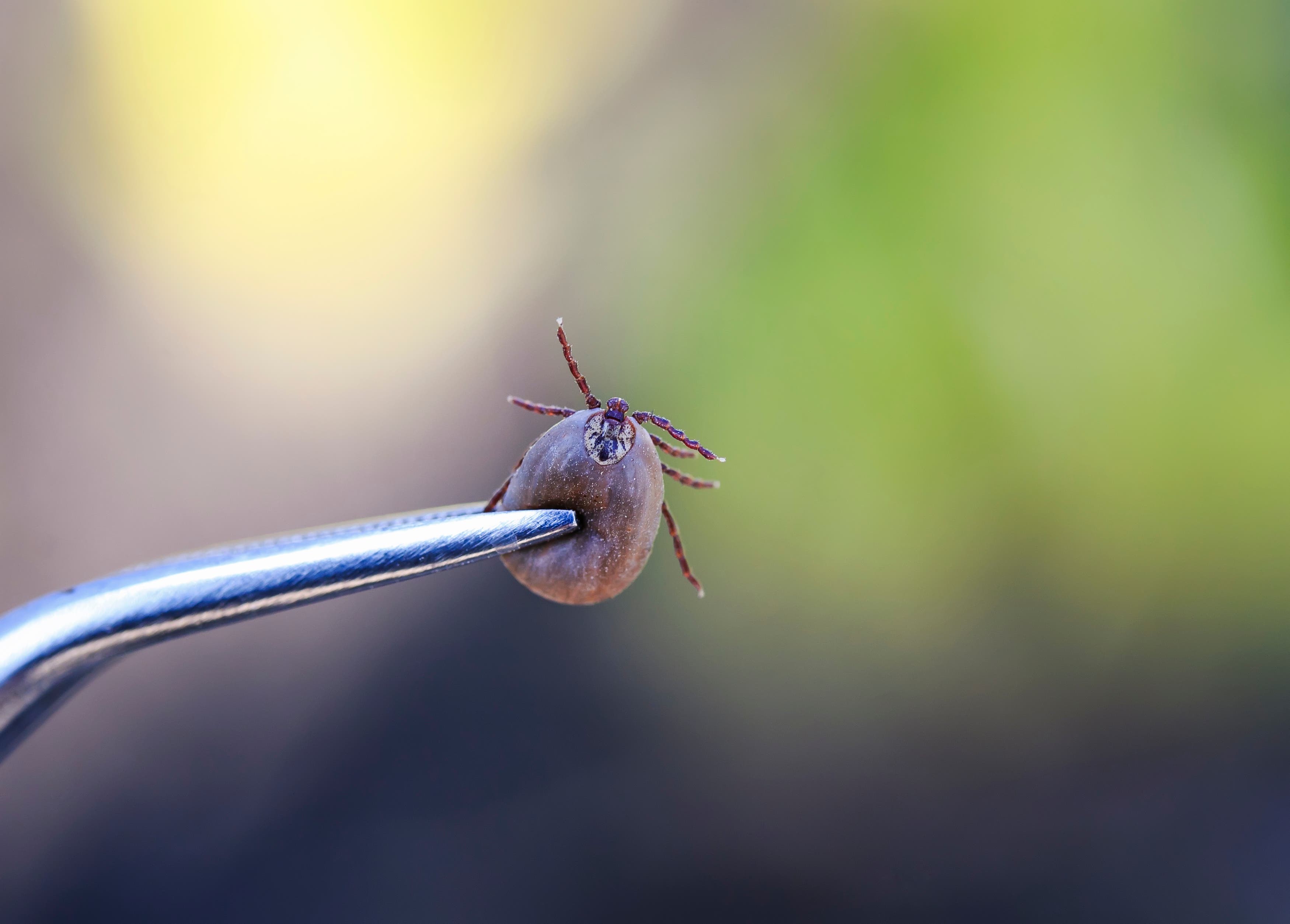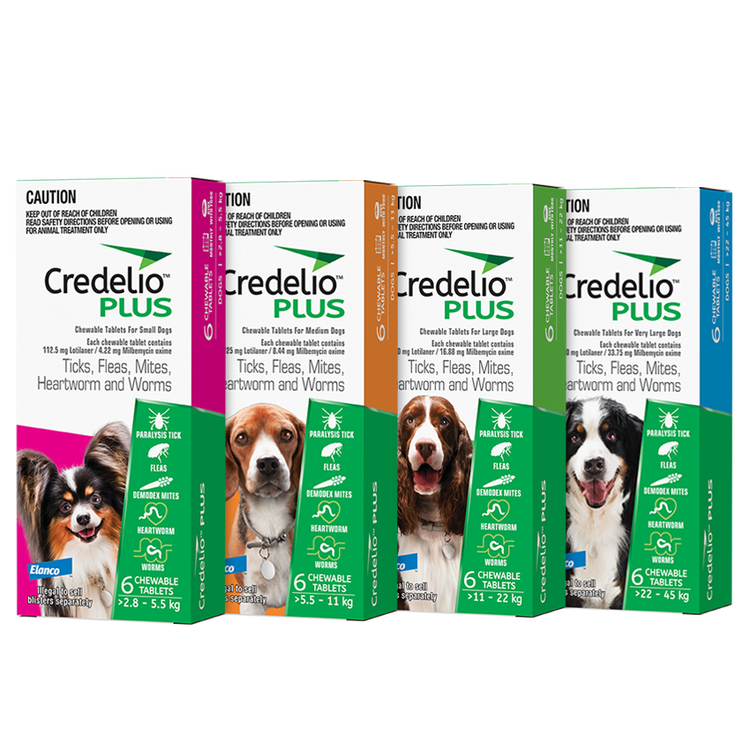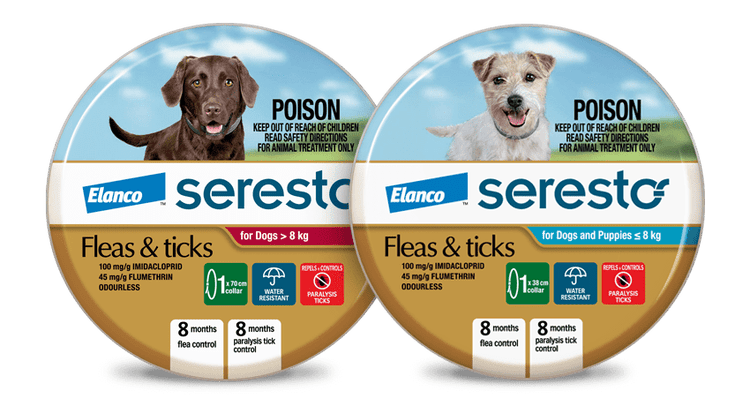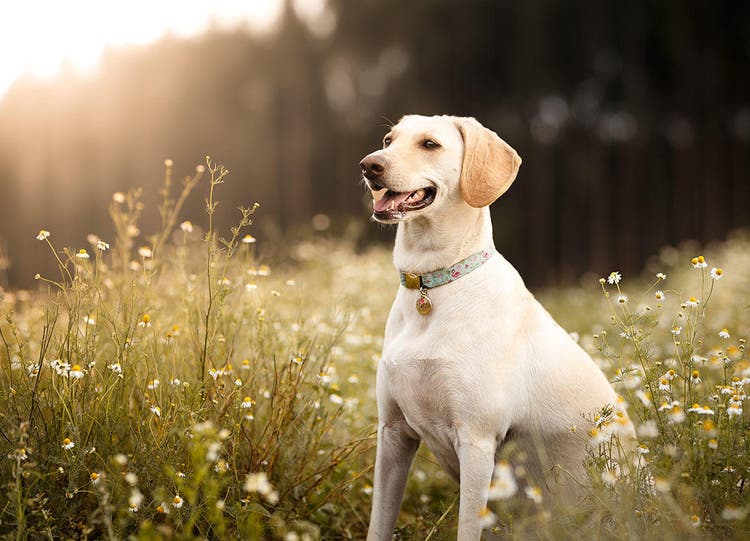Reviewed by Dr Sylvia Shortreed BVSc

In Australia, we’re lucky to enjoy the spoils of an outdoor lifestyle almost year-round — but this can lead to increased exposure to parasites. One of the most common threats to dogs is the brown dog tick, a tiny critter that can quickly latch onto your pet and cause serious problems. This article will talk you through the basics of brown dog ticks, including how to identify them and protect your pooch from any sinister side-effects of brown dog tick bites.
What is a brown dog tick?
Brown dog ticks (Rhipicephalus sanguineus), also sometimes called kennel dog ticks, are a nasty but common species of tick found worldwide. Like other tick species, wet weather preceding warmer temperatures is the ideal breeding ground for brown dog ticks to be out in force.
Where are brown dog ticks found in Australia?
In Australia, brown dog ticks are most prevalent in northern and inland regions, but they can be found almost all over the country. These particular parasites are drawn to warmer, more tropical climates — they thrive in Queensland, the Northern Territory, coastal band of Western Australia and have also been spotted along the coast of New South Wales and Victoria. As their name implies, these ticks prefer dogs as their host, completing their entire life cycle from egg à larva à nymph to adult stage on a dog-host. They are known as 3 host ticks, because they complete each stage of their life cycle on a new host.
Watch this video to see how these ticks find their host, the feeding process and their appearance in comparison to the paralysis tick.
How to identify a brown dog tick
Brown dog ticks have a distinct appearance that can help you spot them. Here are some tips to help you identify a brown dog tick:
- Size and colour: Brown dog ticks are relatively small and flat. Engorged females can become larger after feeding. Before feeding, they are typically reddish-brown in colour, lacking any markings on their backs. After feeding, they can appear darker and bloated.
- Body shape: Brown dog ticks have a somewhat oval or pear-shaped body when viewed from above. They have a tough, leathery texture and are generally flattened.
- Mouthparts: Brown dog ticks’ mouthparts are visible when you look at them from above. They have a characteristic capitulum, which is the mouthpart that attaches to the dog when they feed.
- Legs: Adult and nymph brown dog ticks have four pairs of legs, making a total of eight legs. Their legs are relatively short and sturdy.
- Patterns: Brown dog ticks may have subtle markings or patterns on their back, but these are typically less distinctive than on other tick species.
- Size changes with feeding: The size of the tick can change significantly after feeding. Engorged females can swell up multiple times their original size as they take in blood from a dog.
Diseases from brown dog ticks
Like most parasites, brown dog ticks can cause some serious health issues for your dog if left undetected. While brown dog ticks do not cause tick paralysis, they carry potentially fatal diseases that they can transfer to a dog, and these diseases can be difficult to treat. There are two main diseases that brown dog ticks carry and can transmit to your pet:
Ehrlichiosis: This is a bacterial infection caused by Ehrlichia canis, which can be transferred to a dog within 3 hours via the bite of an infected brown dog tick. Ehrlichiosis can lead to symptoms such as fever, lethargy, loss of appetite, cloudy eyes, discharge from the eyes and nose, weight loss, anaemia and bleeding. There is no vaccine to prevent this disease in dogs and antibiotic treatment is lengthy and not always successful.
Babesiosis: Babesia organisms are protozoa that can be transmitted to a dog via the bite of an infected brown dog tick. This infection can result in symptoms such as fever, anaemia, weakness and even organ damage in severe cases. Babesiosis is treatable but can be tricky depending on the severity of the infection, the specific Babesia species involved, the overall health of the dog and how quickly the disease is diagnosed and treated.
What to do if a brown dog tick bites your pet
If your dog has been bitten by a brown dog tick, there’s no need to panic. When practical, you can visit your local vet for help removing the tick, or ensure you follow appropriate advice on how to safely remove a tick from your dog. If a tick has latched on to your dog and you’re not sure how long it’s been feeding, the best course of action is to see a vet. They can safely remove the tick, as well as provide treatment for any potential diseases or symptoms that your dog may have picked up.
Prevention for brown dog ticks
While reading information about ticks can be frightening, there are easy ways to keep your dog safe from these pesky parasites. As with all medical issues, prevention is the best form of protection.
Credelio™ PLUS is your first line of defence against a wide range of parasites including ticks, fleas, heartworm, intestinal worms and demodex mites. With just one monthly chewable dose, your pooch gets reliable protection from these nasty parasites.
Another fantastic parasite preventative is the Seresto™ flea and tick collar. Once your dog is wearing it, they’re protected from brown dog ticks for up to 4 months, and fleas and paralysis ticks for up to 8 months. This always-on solution is sturdy and waterproof — ideal if your dog is super active or if you live in a rural area. The Seresto collar is the only tick preventative that stops the transmission of ehrlichiosis to dogs by repelling brown dog ticks before they bite. Use Seresto on your dog to give 4 months repellency protection from brown dog ticks and ehrlichiosis, and 8 months protection from paralysis ticks and fleas!
It is vitally important to stay on top of your dog's tick prevention treatments to keep them safe from potentially fatal tick-borne diseases.
Always read and follow label instructions.

Credelio™ Plus 4 in 1 protection in the smallest chew
Keeps your dog protected from ticks, fleas, demodex mites PLUS heartworm and intestinal worms.

Seresto collar for cats & dogs
Seresto provides long-lasting flea protection for cats and dogs for 8 months, and tick protection for dogs for 4 months





